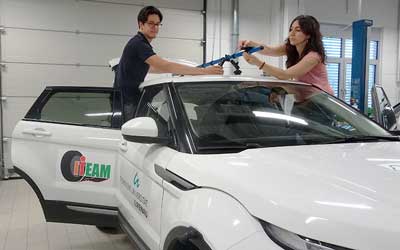| Jan 04, 2019 |
Innovative technology for next-gen vehicles
|
|
(Nanowerk News) The ITEAM project is focusing on the mechatronic subsystems running in modern vehicles, and on how they could interact and take car-making another step ahead. It is enabling 15 early-stage researchers to hone their skills in this area of automotive engineering – paving the way for Europe to make further advances in the development of next-generation vehicle systems.
|
|
There is potential to be tapped by getting the various systems in a car to cooperate with each other, according to project coordinator Valentin Ivanov of Germany’s Technische Universität Ilmenau. ‘The idea is to integrate them into a network where all are simultaneously responsible for different vehicle features.’
|
 |
|
He adds: ‘In conventional cars, we usually have standalone systems. Steering is used solely for shaping the trajectory, for example. Now, we are connecting them to distribute all the tasks related to safety, comfort and stability between the relevant systems, so that each can help to improve the performance for every one of these aspects.’
|
|
ITEAM is due to end in December 2019. Commenting on its progress as of July 2018, Ivanov notes that the project’s early-stage researchers have already developed several new technologies to enhance the control of vehicle dynamics, improve driver comfort and increase energy efficiency. First trials of new experimental vehicles built or upgraded with their help have been completed successfully, he notes.
|
|
The project’s test fleet comprises several automated and electric vehicles, including an innovative full-electric SUV. As part of its work on these cars, which are referred to as ‘multi-actuated’, ITEAM has also developed innovative test rigs that represent significant outcomes in their own right, Ivanov adds.
|
|
However, the technical advances are, in a way, a by-product of this project backed by the EU’s Marie Sklodowska-Curie Actions programme. Its greatest achievements, says Ivanov, are the unique training ITEAM’s early-stage researchers have acquired and the efficient collaboration it has empowered them to establish.
|
|
Academic and private-sector partners are cooperating in the network, which enables its rising experts to conduct research involving a variety of disciplines and settings. ‘Our talented young professionals will definitely make an essential contribution to future mobility technologies,’ Ivanov concludes.
|

